The Process of Safe Septic Tank Removal
 |
| Septic tank removal |
I've had to remove quite a few old Septic Tanks over the years and wanted to share the process of safe septic tank removal, with you. It's not that exciting but there are processes you need to know and that have to be followed.
Septic systems are an essential part of
many homes, but there may come a time when they need to be removed due to age,
damage, or the need for upgrades. The process involves several important steps
that ensure both safety and compliance with regulations.
Firstly, it's crucial to assess the
septic system thoroughly before removal. This includes inspecting its condition
and determining if any hazardous materials are present. Once this is done,
obtaining necessary permits and approvals from local authorities is essential.
Hiring a professional septic tank removal
company is highly recommended as they have the expertise and equipment needed
for this specialized task. They will prepare the site by ensuring proper access
and taking necessary precautions.
Draining and pumping the septic tank
comes next, followed by proper disposal of the waste in accordance with
environmental regulations. Inspecting and restoring the site completes the
physical aspect of removal.
Conducting environmental tests and
clean-up ensures that no contaminants remain after removal. Finally,
post-removal maintenance and monitoring help guarantee continued safety after
completion.
Overall, understanding this process can
help homeowners navigate through safe septic tank removal efficiently while
minimizing any potential risks or hazards involved.
Key Takeaways
•
Assess the septic tank system
and obtain necessary permits before beginning the removal process.
•
Hire a professional septic tank
removal company for expertise, equipment, and compliance with safety
guidelines.
•
Carefully prepare the site,
drain and pump the tank, dispose of waste properly, and inspect and restore the
site after removal.
•
Conduct environmental tests and
ongoing monitoring to ensure the safety of the environment and proper
functioning of the system.
Assessing the Septic
System
You should start by carefully inspecting the septic system, using a
flashlight to illuminate any hidden areas and your hands to feel for any cracks
or leaks. Begin by visually examining the tank itself for any signs of damage
such as corrosion, rust, or visible leaks. Pay close attention to the lid and
ensure it's secure and in good condition.
Next, examine the drain field area for any signs of standing water
or foul odors, which could indicate a problem with the system's drainage.
After visually inspecting the septic tank and drain field, it's
important to perform a thorough physical inspection. Use your hands to feel for
any cracks or leaks in the tank walls or pipes. Additionally, check for any
loose connections or damaged fittings that may need repair or replacement.
During this assessment process, take note of the size and location
of your septic system components. This information will be useful when
obtaining necessary permits and approvals from local authorities.
Transition into obtaining necessary permits and approvals: Once
you've completed a comprehensive inspection of your septic system, it's
essential to obtain the necessary permits and approvals before proceeding with
its removal. These permits ensure that you're following all applicable
regulations and guidelines set forth by your local health department or
environmental agency. By obtaining these proper permissions upfront, you can
proceed with peace of mind, knowing that you're adhering to all legal
requirements surrounding safe septic tank removal.
Obtaining
Necessary Permits and Approvals
Before embarking on this endeavor, it's crucial to secure all the
required permits and approvals. Obtaining the necessary permits and approvals
is an essential step in the safe septic tank removal process. This ensures that
you are complying with local regulations and protecting both yourself and the
environment.
To begin, you'll need to contact your local health department or
environmental agency to inquire about the specific permits needed for septic
tank removal. They'll provide you with information on any application forms,
fees, or supporting documents required. It's important to carefully review
these requirements and submit a complete application to avoid any delays or
complications.
In addition to permits, you may also need approvals from other
relevant authorities such as building departments or zoning boards. These
agencies will assess factors like property setbacks, access roads, and
potential impacts on neighboring properties before granting approval for septic
tank removal.
Securing all necessary permits and approvals can take time, so it's
advisable to start this process well in advance of your planned removal date.
It's also important to note that failure to obtain proper permits can result in
fines or legal consequences.
Once all the required permits and approvals are obtained, you can
proceed confidently with hiring a professional septic tank removal company.
Their expertise will ensure that the process is carried out safely and
efficiently.
Hiring a
Professional Septic Tank Removal Company
When it's time to bid adieu to your underground waste management
system, leave the job to the pros by hiring a skilled septic tank removal
company. Removing a septic tank is not a DIY project that you can tackle on
your own. It requires expertise and specialized equipment to safely and
efficiently remove the tank without causing any damage or harm.
A professional septic tank removal company has the knowledge and
experience to handle all aspects of the process, from disconnecting the plumbing
lines to excavating the tank.
One of the main advantages of hiring a professional septic tank
removal company is that they have access to all the necessary tools and
equipment needed for the job. They'll come equipped with heavy machinery such
as excavators and backhoes, ensuring that the excavation process goes smoothly.
Moreover, they have trained technicians who're familiar with safety protocols
and know how to handle hazardous materials.
In addition, hiring professionals ensures compliance with local
regulations and codes. Septic tank removal requires permits and approvals from
local authorities, which can be a complex process if you're not familiar with
it. A reputable septic tank removal company will take care of obtaining all
necessary permits on your behalf, saving you time and hassle.
By hiring professionals for septic tank removal, you can rest
assured that the job will be done efficiently and safely. Once you've hired a
reputable company, they'll guide you through every step of preparing your site
for removal, ensuring a seamless transition into this next phase.
Next up: Preparing The Site For Removal
Preparing the Site
for Removal
Once the professionals arrive, they'll assess and evaluate the site
to ensure a smooth and efficient transition to the next phase. They'll begin by
inspecting the area around the septic tank, checking for any potential
obstacles or hazards that may hinder the removal process. This includes
identifying nearby structures, trees, or underground utility lines that need to
be taken into consideration.
Next, they'll carefully mark off the boundaries of the site to
clearly indicate where excavation will take place. This helps prevent any
accidental damage to surrounding areas and ensures that only the necessary
portions of land are disturbed during removal.
To prepare for septic tank removal, the professionals will also make
sure that proper safety measures are in place. This may involve wearing
protective gear such as gloves and goggles, as well as setting up barriers or
fencing around the work area to keep unauthorized personnel away.
Additionally, they'll determine if any permits or licenses are
required for this type of work and obtain them if necessary. Compliance with
local regulations is essential for ensuring a safe and legal removal process.
With all these preparations complete, we can now move on to draining
and pumping the septic tank. This crucial step involves removing all liquid and
solid waste from within the tank before it can be safely lifted out of its
position.
 |
| Septic tank removal |
Draining and Pumping the Septic Tank
To effectively remove the septic tank, it's crucial to drain and
pump out all the waste within. This step is essential because it ensures that
the tank is empty and ready for removal.
Draining and pumping a septic tank involves using specialized
equipment to extract the wastewater and sludge that have accumulated over time.
First, a septic professional will locate the access point of the tank, which is
typically a manhole cover or an opening in the ground. They'll then use a
vacuum truck or a pump truck equipped with powerful suction capabilities to
remove the contents of the tank. The vacuum truck creates negative pressure,
allowing it to pull out all the liquid waste from inside.
During this process, it's important to be cautious and follow safety
protocols. Proper protective gear should be worn at all times to prevent
exposure to harmful gases and pathogens present in sewage. Additionally, care
must be taken not to damage any pipes or components of the septic system during
pumping.
Once all the waste has been pumped out successfully, attention can
be turned towards excavating and removing the tank itself. This next phase
involves digging around the tank using excavation equipment such as an
excavator or backhoe. By carefully adhering to safety guidelines and employing
proper techniques, we can ensure efficient removal of both waste materials and
ultimately, complete extraction of the septic tank from its location without
causing any damage or harm.
Excavating and
Removing the Tank
Excavating and removing the tank requires careful digging and the
use of specialized equipment. The first step in this process is to locate the
septic tank and mark its boundaries. This is crucial to ensure that we excavate
in the right area and avoid damaging any underground utilities or structures.
Once marked, we begin by carefully digging around the tank using a
backhoe or an excavator. It's important to exercise caution during this step to
minimize any potential damage to the surrounding soil or nearby structures.
After the tank has been fully exposed, we proceed with removing it
from the ground. Depending on its size and weight, we may need to use a crane
or other heavy machinery for lifting. The tank is then placed onto a flatbed
truck for transportation to an approved disposal facility.
During this entire process, safety measures are strictly followed to
protect both our team members and the environment. Personal protective
equipment such as gloves, goggles, and masks are worn at all times. We also
take precautions to prevent any spillage or leakage of sewage during
transportation.
As we conclude the excavation and removal of the septic tank, proper
disposal of septic waste becomes our next priority. This involves following
local regulations regarding waste handling and transport. By adhering to these
guidelines, we ensure that all waste materials are disposed of safely and
responsibly.
Excavating and removing a septic tank necessitates careful planning,
precise digging techniques, specialized equipment, and adherence to safety
protocols. Once completed successfully, attention shifts towards properly
disposing of septic waste without causing harm to human health or the
environment.
Proper Disposal of
Septic Waste
Properly disposing of septic waste is essential, ensuring the safe
and responsible management of this potentially harmful byproduct. Once the
septic tank has been excavated and removed from the ground, it's crucial to
handle the waste in a manner that minimizes any negative environmental impact.
The first step in proper disposal is to transport the septic waste to a licensed treatment facility or wastewater treatment plant. These
facilities have specialized systems in place to effectively treat and process
the waste.
At these treatment facilities, the septic waste undergoes a series
of processes to remove any harmful substances and pathogens. This may include
filtration, sedimentation, biological oxidation, or chemical treatments. By
subjecting the waste to these treatments, it becomes less hazardous and can be
safely released back into the environment without causing harm.
It's important to note that attempting to dispose of septic waste
improperly can lead to contamination of groundwater or surface water sources,
posing significant health risks for both humans and wildlife. Therefore, hiring
professionals who are knowledgeable about local regulations and have experience
in handling septic waste is crucial.
Proper disposal of septic waste plays a vital role in ensuring
environmental safety and public health. By transporting it to licensed
treatment facilities where it undergoes thorough processing before being
released back into nature, we can prevent potential pollution issues.
With this step completed successfully, we can transition into
inspecting and restoring the site with confidence that all necessary
precautions have been taken during the removal process.
Inspecting and
Restoring the Site
After the septic waste has been handled responsibly, we can now
inspect and restore the site to its original condition. This step is crucial in
ensuring that no further harm or contamination occurs as a result of the septic
tank removal process.
First, we carefully inspect the area where the septic tank was
located. We look for any signs of damage or leakage that may have occurred
during the removal process. If any issues are found, they're immediately
addressed and repaired to prevent any potential environmental hazards.
Next, we focus on restoring the landscape and surrounding areas.
This involves filling in any holes or trenches that were created during
excavation. We make sure that soil is properly compacted to prevent settling or
erosion in the future. Additionally, we replant grass or vegetation to restore
the aesthetic appearance of the site.
Furthermore, it's important to conduct environmental tests to ensure
that there are no lingering contaminants in the soil or groundwater. Samples
are taken from various locations around the site and analyzed in a laboratory
for any traces of harmful substances. If necessary, clean-up measures are
implemented to mitigate any potential risks.
By thoroughly inspecting and restoring the site after septic tank
removal, we can ensure that all necessary precautions have been taken to
protect both human health and the environment. Now, let's move on to discussing
how environmental tests are conducted and what steps are involved in clean-up
procedures without delay.
Conducting
Environmental Tests and Clean-up
Now let's dive into how we test the environment and clean up after
removing the septic tank. Once the septic tank has been successfully removed
from the site, it's crucial to conduct thorough environmental tests to ensure
that there aren't any potential hazards or contaminants left behind.
These tests include soil sampling and analysis, as well as water
testing if applicable. Soil sampling involves collecting samples from various
locations across the site and analyzing them for any signs of contamination.
This can help us determine if there were any leaks or spills during the removal
process that may have affected the soil quality. Additionally, water testing
may be necessary if there's a risk of groundwater contamination. This involves
analyzing samples taken from nearby wells or other water sources to ensure that
they meet safety standards.
Once all necessary tests have been conducted and analyzed, it's time
to proceed with the clean-up process. This typically involves removing any
remaining debris or materials associated with the septic tank, such as pipes or
fittings. We also take steps to restore the site to its original condition by
filling in any excavated areas and reseeding grass or vegetation.
Conducting environmental tests and performing a thorough clean-up
after septic tank removal is essential for ensuring that no harmful substances
are left behind on-site. It allows us to address any potential issues promptly
and mitigate any risks to both human health and the environment.
In our next section on post-removal maintenance and monitoring,
we'll discuss how we ensure ongoing safety after completing these initial
steps.
Post-Removal
Maintenance and Monitoring
Maintaining a clean and healthy environment requires ongoing
monitoring and maintenance even after the septic tank has been taken care of.
Once the septic tank has been safely removed, it is important to continue
regular maintenance to ensure proper functioning of the system and prevent any
potential environmental hazards.
This involves implementing post-removal measures, such as regular
inspections and monitoring of the area. After the removal process, it is
crucial to inspect the surrounding soil for any signs of contamination or
damage caused by the septic tank. This can be done by conducting soil tests to
determine if there are any lingering pollutants that may pose a threat to
groundwater or nearby water bodies.
Additionally, periodic inspections should be carried out to check
for any signs of leakage or malfunction in other components of the system, such
as pipes or drain fields. In terms of maintenance, it is important to properly
dispose of wastewater generated from other sources after septic tank removal.
This can be achieved by connecting your property to a municipal sewer system or
installing an alternative wastewater treatment system. Regular pumping and cleaning
of these systems will also help prevent blockages and keep them operating
efficiently.
Monitoring plays a vital role in ensuring long-term environmental
safety. Continued monitoring allows for early detection of any issues that may
arise, allowing prompt action before they escalate into larger problems.
Monitoring may involve testing water quality in wells or nearby water bodies on
a regular basis, as well as keeping track of changes in vegetation growth
patterns around the former septic tank site.
Overall, post-removal maintenance and monitoring are essential steps
in safeguarding our environment from potential harm caused by old septic tanks.
By adhering to these practices diligently, we can ensure that our surroundings
remain clean and healthy for future generations.
Frequently Asked
Questions
How much does it
cost to remove a septic tank?
Removing
a septic tank can cost anywhere from $3,000 to $10,000, depending on factors
such as the size of the tank and its location. It's best to consult with a professional
for an accurate estimate.
Can I remove a
septic tank myself without hiring a professional?
Removing
a septic tank yourself without professional help is not recommended. It can be
dangerous due to the risk of exposure to toxic waste and potential damage to
underground utilities. Hiring a professional ensures safe and proper removal.
Are there any
risks or dangers associated with septic tank removal?
Yes,
there are risks and dangers associated with septic tank removal. These include
exposure to harmful gases, potential damage to underground utilities, and the
risk of structural collapse if not done properly. It is advisable to hire a
professional for safe removal.
What should I do
with the septic system components after removal?
After
septic tank removal, I should properly dispose of the system components. This
can be done by contacting a local waste management facility to arrange for
disposal or recycling. It is important to follow proper waste disposal
guidelines to ensure environmental safety.
How long does
the septic tank removal process typically take?
The
septic tank removal process typically takes about 1-2 days, depending on the
size and complexity of the system. It involves draining the tank, excavating it
from the ground, and safely disposing of the contents and tank materials.
.png)
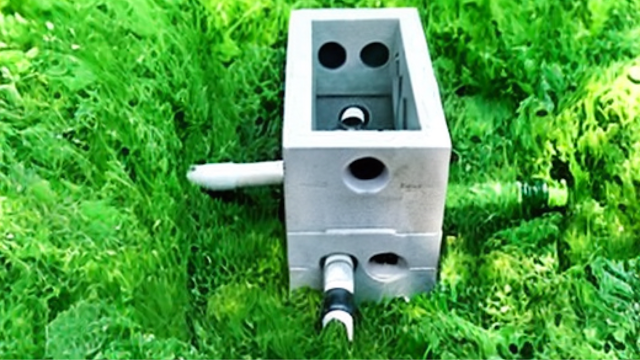
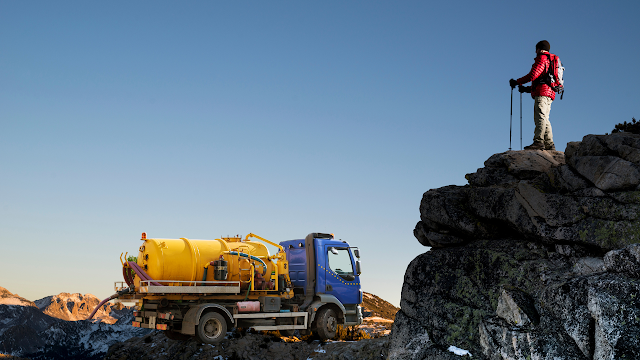
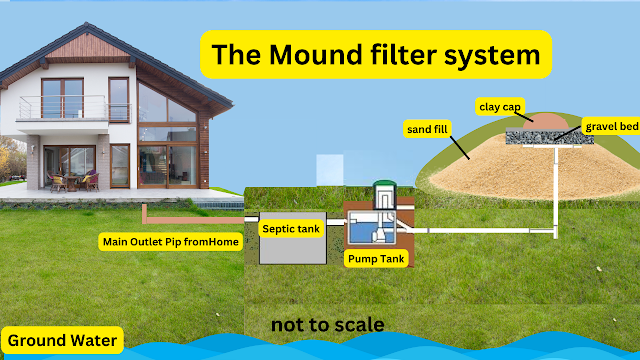
.png)

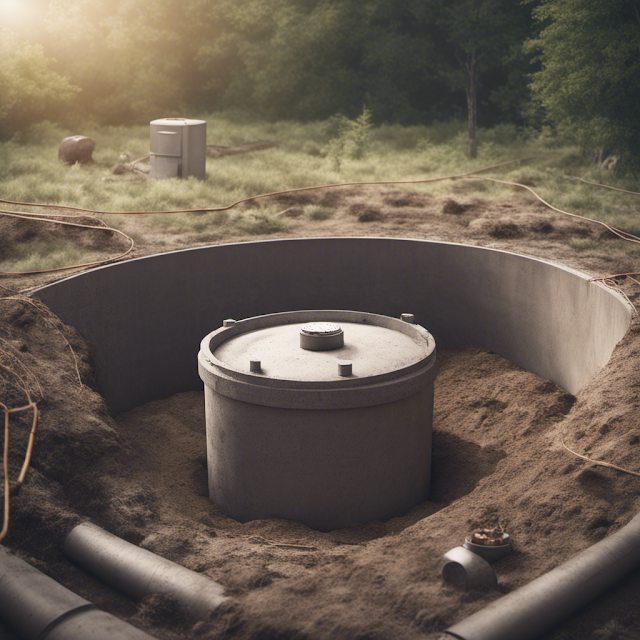
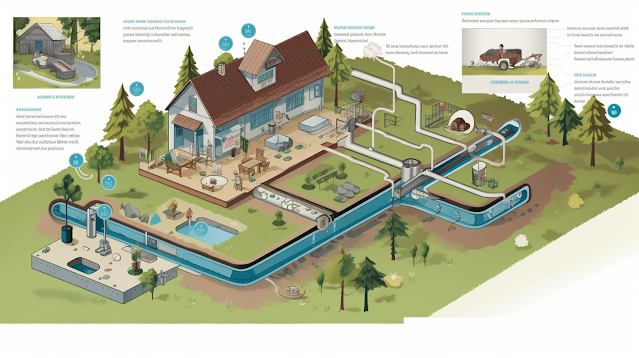
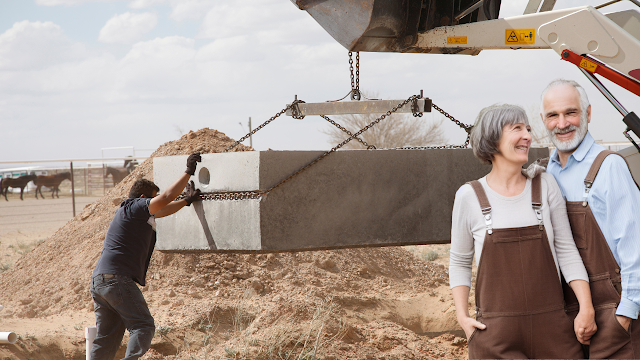


Comments
Post a Comment